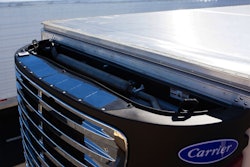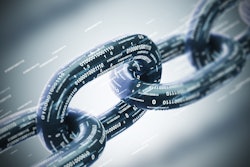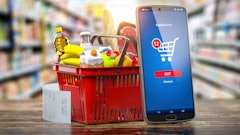
The recently rebranded FMI – The Food Industry Association, Arlington, Va., and Nielsen, Chicago, updated their predictions on online food and beverage sales to $143 billion by 2025, which will represent 30% of all omnichannel food and beverage spending. This figure was first predicted in 2017 as $100 billion by 2025 and updated last year to $100 billion reached between 2022-2024.
The food retail industry is crossing new boundaries at an unprecedented rate. All of a sudden, Boomers and Gen X are vying with Millennials and Gen Z for the title of online shopping stars. Meanwhile, the physical store is now at an omnichannel crossroads, with some observers imagining a nightmare scenario in which a shopper, picker and robot are all battling for the same in-store item on the same shelf. Who would win? Has omnichannel created the Wild West of retail?
As the new decade gets underway, the dynamics of e-commerce and omnichannel are growing in complexity, but the industry can adjust if it reacts forcefully in real time.
This is the fourth in a series of annual reports from Nielsen and FMI on the digitally engaged shopper.
During the past few years, retailers and manufacturers have been focused on building digital-engagement models and creating e-commerce websites and web- and mobile-based applications. The next phase of progress is about taking those strategies to the next level and increasing focus on aspects that include supply chain.
This report underscores the need to advance from omnichannel 1.0. Such a move requires further improving capabilities and shifting perspectives about consumers from omnichannel to omnishopper. The latter refers to consumers and households that purchase both in-store and online. The term takes the focus off channels and puts it on shoppers. This group of shoppers will increasingly dominate in coming years.
The next phase will require retailers and manufacturers to embrace self-disruption and think more like startup companies. For many years, competitors disrupted the market from the outside. Today’s CEOs need to disrupt from within by radically altering operating models to boost competitiveness. What was novel four years ago is now the price of entry. For example, there is now a consumer personalization imperative, which needs to be seamless based upon shopper preferences and behaviors. The next generation of industry execution will be about systems and capabilities to accomplish this personalization and gain first mover advantage.
Prior reports in this series addressed the “size of the prize,” with forecasts on transitions to online shopping. The first forecast, in 2017, predicted that consumer online food and beverage spend could reach $100 billion by 2025. The $100 billion was expected to represent about 20% of overall spend across a range of retail channels. By the time of the 2018 report, the pace of online shopping continued to advance, so the forecast was accelerated. It said the $100 billion online spending level might be reached between 2022-2024. For this year’s report, FMI and Nielsen are again updating projections to reflect further transformation. The new projection for online food and beverage dollar sales is $143 billion by 2025.
This new projection will represent about 18% of an expected overall $800 billion in combined online and in-store spending for food and beverage at home by 2025. This reflects consumers buying from a wide range of food retail channels and also considers food-at-home factors that weren’t considered for the earlier forecasts. These factors played a much smaller role previously, but their impact has accelerated in the last couple of years, driving online sales.
Here are new factors to take into account for the latest projection:
· Restaurant delivery to homes, including by third-party players.
· Retail foodservice.
· Delivery of meal kits.
· More switching of purchases from in-store to online.
· A surge in Amazon Prime subscription and auto replenishment.
· Proliferation of two-hour delivery to homes.
· Enhanced click-and-collect infrastructures by major retailers.
While the power of omnishoppers is impressive now, it will be overpowering by 2025. By that year, omnishoppers will influence more than $630 billion in food, beverage and non-food spending at retail, from online to in-store, Nielsen forecasts. That’s a big number, and it’s important to understand what’s involved. n $630 billion in omnishopper spending divides into $475 billion in food and beverage and $155 billion in non-food.
How does this relate to the forecast cited earlier of $143 billion in online food and beverage spending by 2025? The $143 billion is the online portion of the omnishoppers’ $475 billion in spending on food and beverage. The balance of the $475 billion will be in-store food and beverage spending.
So in short, online food and beverage spending will be about 30% of all omnishopper food and beverage spending by 2025.



















